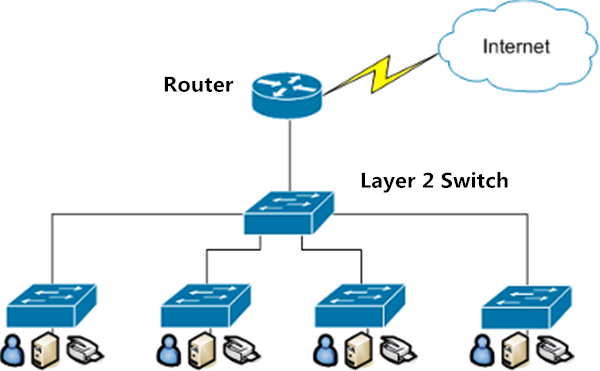
Layer 2 switching unlocks incredible potential for network efficiency, enabling data frames to be sent quickly and securely from one device to another based on nothing more than their MAC addresses. Switches & bridges are magical devices that allow us to shrink large collision domains into tiny pieces – with just the flip of a switch. With the right network switch, network traffic can be seamlessly managed across your network with minimal disruptions and delays. A network switch is an essential component of any network infrastructure, so choosing the right one is key to ensuring smooth network performance.
Today, switches reign supreme in the realm of local area networks. Far surpassing its predecessors – hubs and bridges – these clever devices are aware of incoming traffic, able to make decisions on how it should be forwarded accordingly. Not only do they have more ports than a bridge- allowing for higher connection potential with multiple collision domains- but each port is also a separate domain ensuring no packet collisions occur along the way!
Switches are an integral part of today’s digital world, revolutionizing the way we manage and route our connections. With more ports than bridges, switches can inspect incoming traffic to make informed forwarding decisions for a variety of purposes; additionally each port is its own collision domain- eliminating any fear of packet collisions.
Layer 2+ switches offer a myriad of advantages that make them faster than routers. They rely on hardware addresses to quickly decide whether or not to forward, drop, or flood each frame they receive with virtually no time spent analyzing Network layer headers. This lightning-fast performance is powered by fast bridging (ASICs), wire speed connectivity and low latency features – all at an affordable cost!
By employing switches, you can drastically reduce the amount of collisions on your network due to each port acting as its own distinct collision domain. Moreover, these smart devices learn which device is connected where and makes sure that frames only reach their desired destinations by reading the MAC address included in them – leading to reduced traffic congestion and an overall boost for security!
For those needing network switches, particularly L2 switches, it is important to ensure that the network traffic requirements are considered when selecting a switch. Switches with more internal switching performance, higher port speeds and uplink speeds and larger port buffers can handle network traffic more efficiently. Spending more on high-performance switching fabrics generally translates to better buffering levels as well. Ultimately this will help make sure the network runs smoothly with minimal disruptions or delays.
When selecting a network switch, factor in current and future network traffic needs when making the most informed choice possible to maximize your network’s performance. Consider the cost of the switch vs its features and make sure you get one that meets your network’s requirements without breaking your budget.



